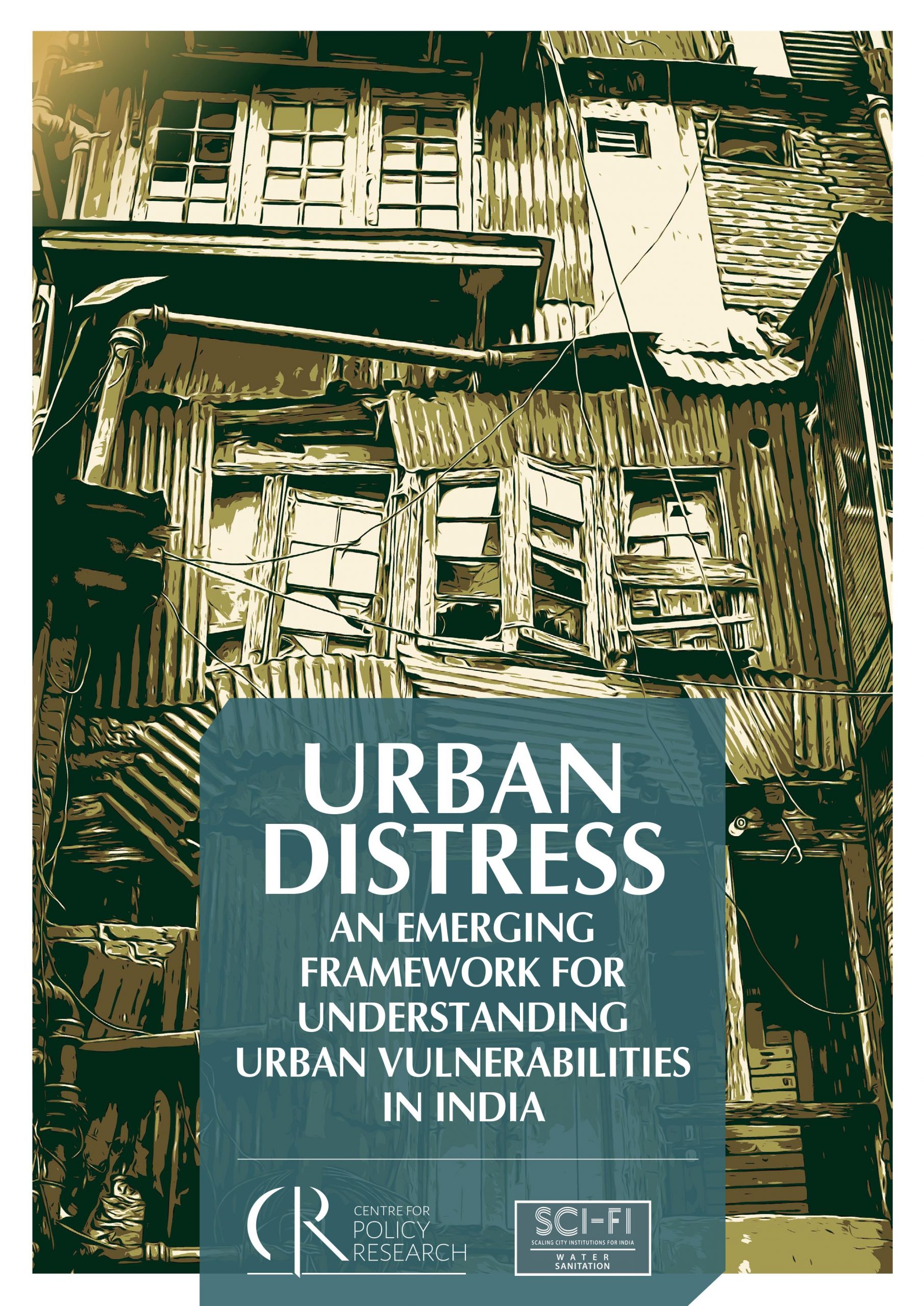The sustained economic growth and structural transformation of the Indian economy has resulted in increased growth of cities and towns. However, lack of investment in basic infrastructure and the low state capacities together deepens the vulnerability of marginalised communities in these urban areas. Similar phenomenon is well recognised and studied in rural areas as rural distress, however, it remains relatively understudied in Indian towns and cities. The distress in urban areas is veiled under the binaries of slum/non-slum, poor/non-poor. It is important to move beyond these binaries and focus on identifying geographies of distress for better targeted policy interventions and investments.
This research discusses a framework to conceptualize and measure urban distress in the Indian context. Urban distress emerges as the result of mismatch between the requirements of an urban growth and the capacity of the key stakeholders to address these needs. We conceptualize urban distress at two levels – macro and micro. Macro urban distress is the measure of distress at the city level focusing on economic and physical and social infrastructure availability while the micro-urban distress aims to measure the household level residential, occupational, and social vulnerabilities. We analyse social, economic, and demographic data from Population and Economic census to measure and analyse macro and micro distress in Class 1 cities of select states.
The research underscores level of distress in cities that varies based on the size of the city and the nature of economic growth at both the state and city scales. Results of the analysis emphasises the potential for managing the urban growth in an equitable manner by formulating strategies based on the scale and socio-economic context within which urbanisation is taking place. This framework can help the cities to ‘build back better’ as we recover from the ongoing pandemic and steer inclusive development in the face of emerging challenges including climate change.

